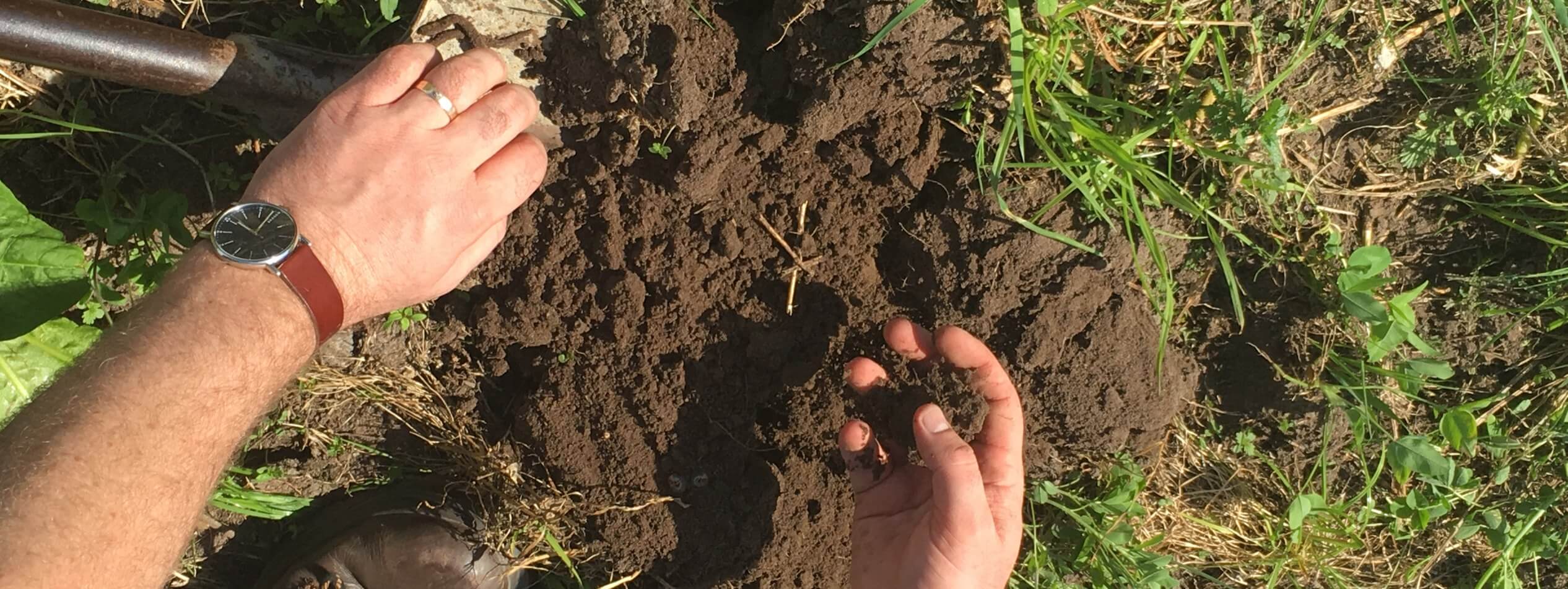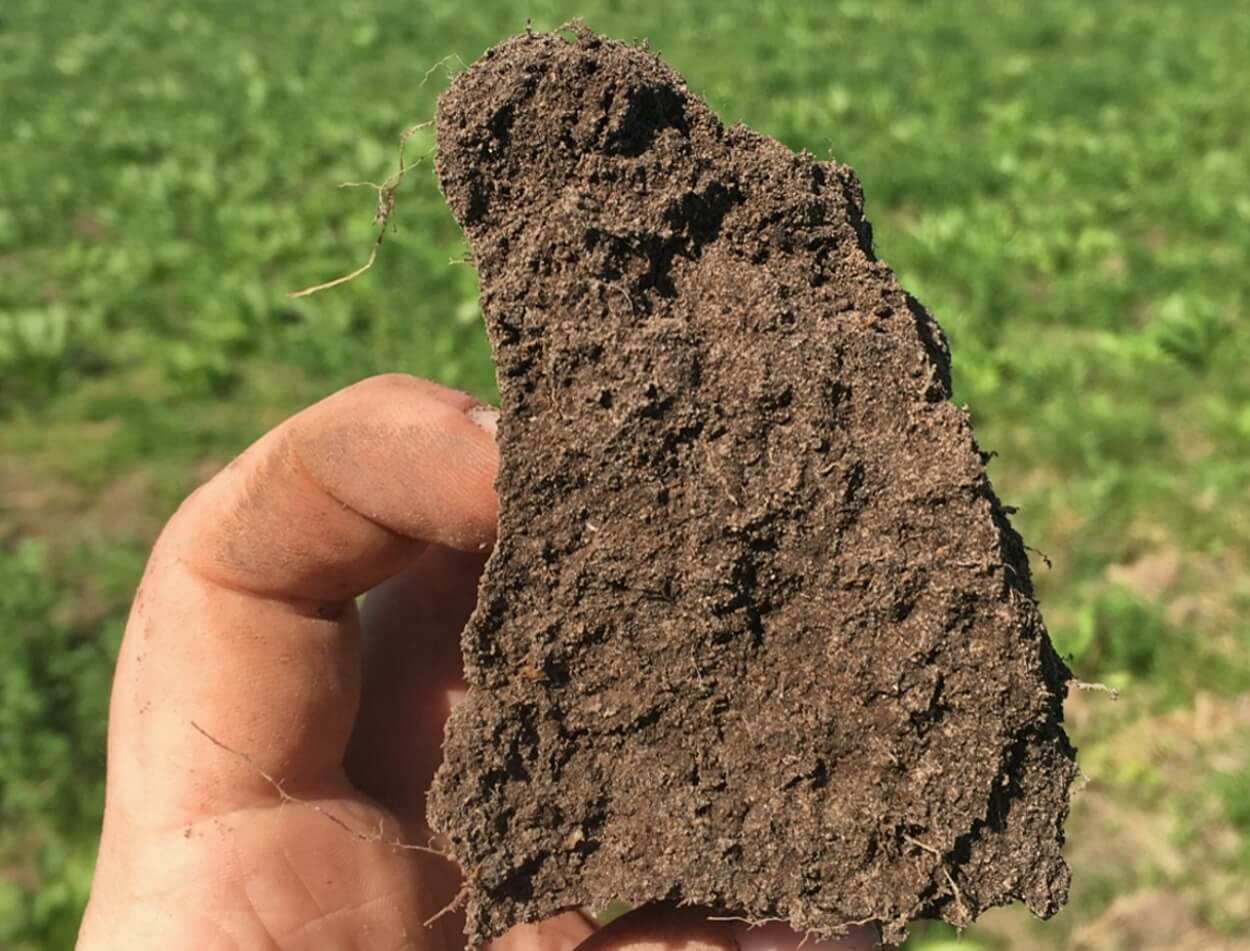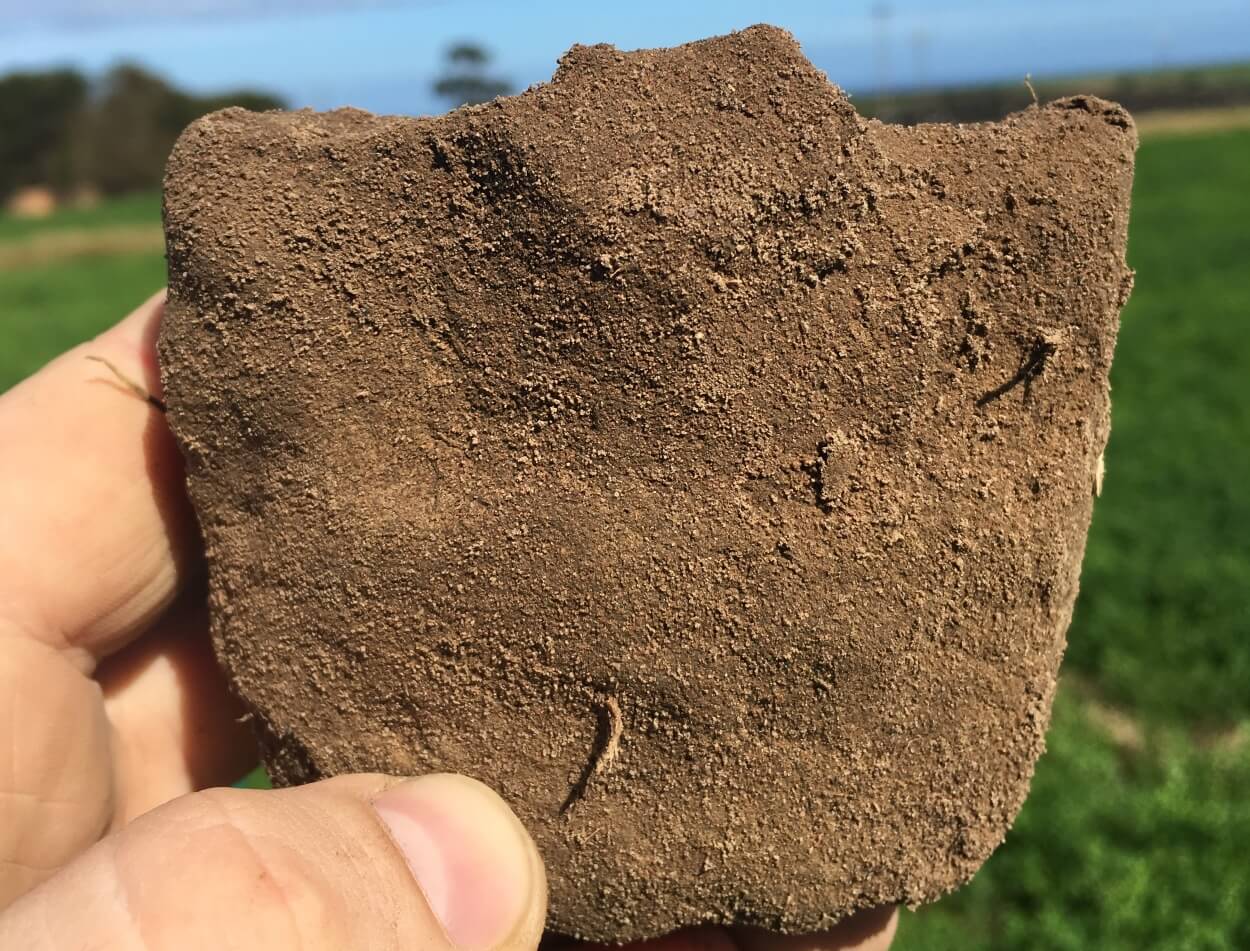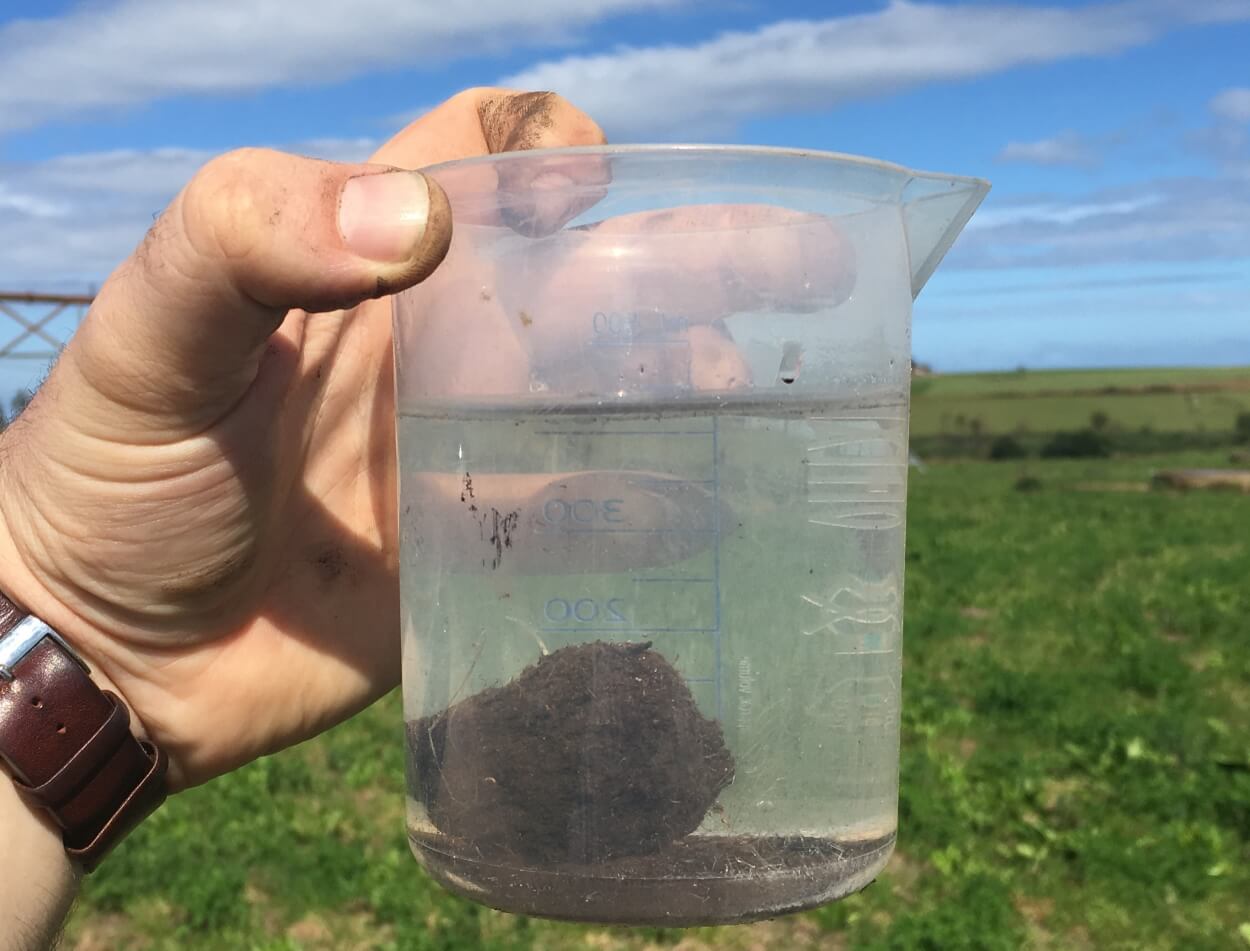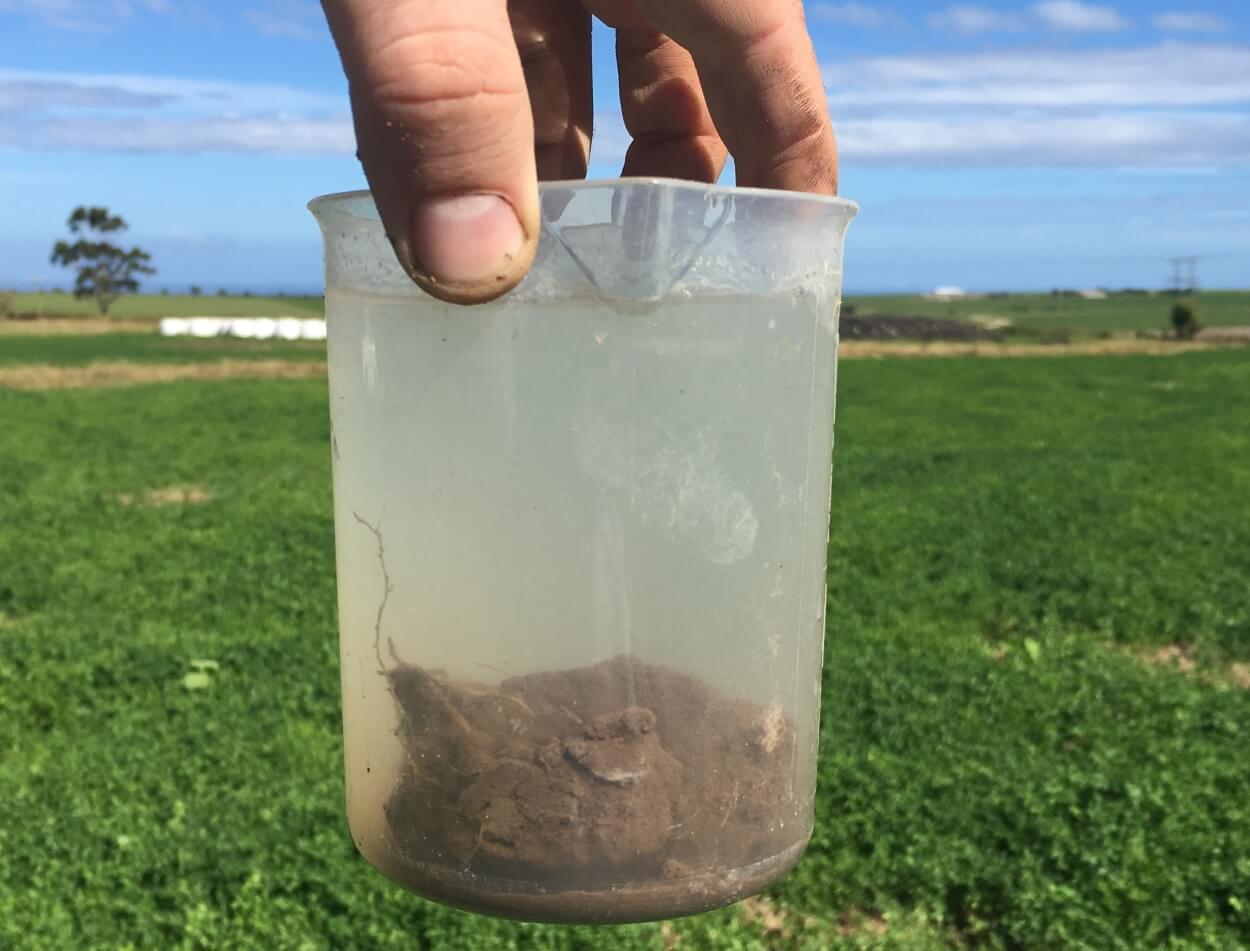The other day we went out to a farm to do a basic visual examination of some differences between a soil with very high carbon and a soil with low carbon. This farm provides a perfect example to do this. The camp with the high carbon (7.13%) has been under good soil health management for about 10 years. The camp with lower carbon (1.84%) was only acquired more recently by the farmer, who has been working to improve it as it was badly degraded. In this blog I just want to show two examples of observations we made about the structure of the two different soils. There are many more observations which can be made, but these are just two examples.
Soil aggregates are groups of soil particles which form a stable clump. Aggregation is a very important process in forming a good structured soil. Good aggregates lead to more pore spaces in the soil, which allow for the movement of water and air, both of which are important to soil life and plant growth. Aggregates are held together by clay, organic matter, fungal hyphae and gums which are released by bacteria and fungi. The soil on the farm we visited is very sandy, with very little to no clay. Any aggregation can therefore be ascribed to the organic matter (carbon) and soil life. There are two quick examinations that we did to check for soil aggregates. The first is to dig a hole, and crumble the soil. When the soil is crumbled and there is good aggregation, the soil will not fall apart, but rather crumble into smaller aggregates, much like feta cheese. The pictures below show the difference in structure between the high carbon pasture and the low carbon pasture. Notice the difference in colour, and the difference in pore spaces.
High carbon soil – good structure, darker colour, porous
Low carbon soil – poor structure, lighter colour, less porous
The second examination was to place an aggregate into a cup of water. A well aggregated soil will maintain its structure and not break apart in water, whereas a soil with poor structure will begin to disintegrate. The pictures below show the difference between soil aggregates from the two pastures. The aggregate in the high carbon soil remained intact like this for over ten minutes. Notice how clear the water is in the high carbon soil, compared to the murky water in the other soil.
High carbon soil – good structure, intact aggregate, clear water
Low carbon soil – poor structure, aggregate disintegrating, murky water
These two very simple visual assessments can give farmers an idea of how good the structure of the soil is on their farms. They are also a good demonstration of the benefits of soil carbon and how carbon contributes to well aggregated soil.
- A carbon footprint assessment for pasture-based dairy farming systems in South Africa - 2024-02-07
- What progress have farms participating with Trace & Save made over the past 10 years? - 2023-09-06
- Carbon footprint reduction over time: Lessons from pasture-based dairy farms in South Africa - 2023-09-04

